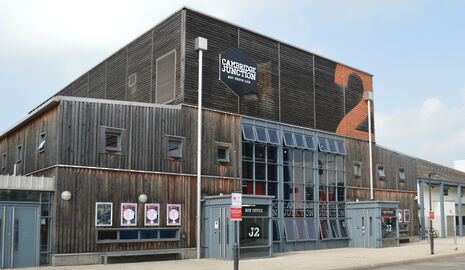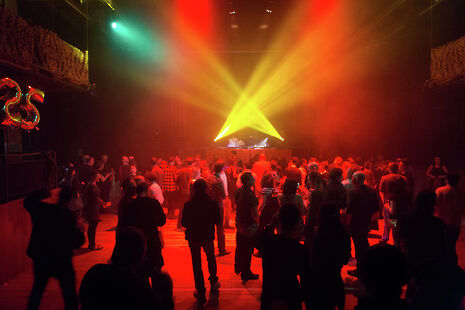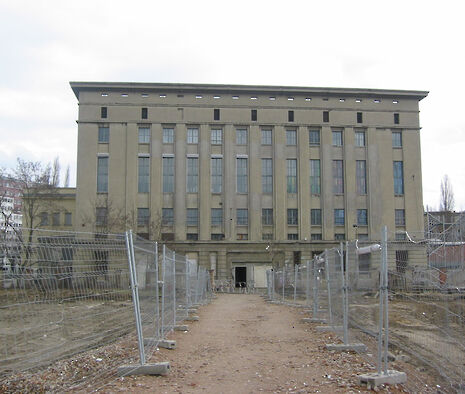Beyond the bubble: exploring the Cambridge Junction
The Junction is Cambridge’s most exciting arts venue, and unfairly neglected by the city’s transient population of students

The Junction is often beyond the radar of Cambridge students. Situated just past the railway station, adjacent to the strangely corporate and soulless leisure centre best known to nearby Homertonians, the Junction’s surroundings used to be the site of a decrepit cattle market discernibly outside of the city centre. The architecture of the original building is testament to the City Council’s intention to stop noise escaping from the venue, originally created to give youths something to do as the rave scene of the 90s was emerging. The Junction was, and to some extent continues to be, firmly on the ‘town’ side of the town/gown divide.
Describing itself as “committed to art and entertainment that is up-and-coming, youthful and cutting-edge”, with Lottery and Arts Council grants, the Junction has grown and expanded over the past 25 years to become something more considerable than a doghouse for Cambridge’s loud and dance-prone teenagers. Over the first 17 years of its existence, the Junction grew from 400 to 1,500 capacity, while the number of annual events tripled, increasingly surrounded by urban development and sprawl – a Travelodge, cinema complex, and plenty of chain restaurants.
Yet its sense as a venue for residents, rather than a haunt of Cambridge’s transient and temporary student community, seems to persist. Despite having an incredibly impressive line-up, the intimate and well-equipped venue is rarely attended by Cambridge students. As a former sixth former in Cambridge, this quirk seems a little wasteful - I remember some of my first live music experiences at Little Comets and Local Native gigs in J1, and seeing a contemporary dance piece my sister was involved with in J2. The Junction is friendly, cheap and offers something quite different to anything else in the centre of the city.

I caught up with the Junction’s Art Producer, Daniel Pitt, to find out more about the venue, and what it had to offer university students. Daniel doesn’t only put on a programme of contemporary theatre, dance, live arts, spoken word performances and avant garde festivals, but also works on artist development. Troop, which was created just over a year ago, gives an opportunity for those living in Cambridge or East Anglia (including students) interested in contemporary performance to get support (with residencies, advisory meetings and workshops), meet other like-minded people and join a community to help propel their work forward – for just £5 a year. Testament to its slogan ‘art meets life’, the Junction is focused not only on providing a venue for audiences, but on enriching the role of the arts in Cambridge by supporting its creators.
When I ask about what makes the Junction so special, the answer quickly follows that not only is it a history “of the people”, and that it supports local budding artists with contemporary works that respond to real life, but that it is “youthful, and not stuffy”. Daniel tells me it is the “liveness of theatre” that interests him; capturing what cannot be captured on film, and helping support immersive environments that are perhaps being lost by an increasingly digital millennial generation. It’s not just a theatre, but an arts centre: while hosting experimental and cutting-edge improvised theatre, it also puts on drum and bass nights that continue until the early hours of the morning. It is a dynamic space, not re-performing Macbeth for the umpteenth time as many students seem inclined to, but attempting to establish a real relationship between the city and the arts.
It’s important for Cambridge – we lack spaces like this. As a city that never had much industry, it’s difficult to convert warehouses and factories into venues like the Tate Modern, Dalston Superstore or the Warehouse Project’s Store Street. That same re-purposing of industrial space makes Berlin, Łódź, La Sucrière and Basilica Hudson thrive. In many ways, the fabric of the city doesn’t allow for this kind of regeneration. Ade & Abet existed in a warehouse near the train station for about three years, but have since downsized to a studio space called ELAN (Experimental Local Area Network) as the CB1 development takes hold. If it’s true that there’s not much space in Cambridge, and little room for a scene to thrive, it’s just as true that Cambridge students aren’t making the most of, least of all participating in, what we do have.

Management at the Junction seem aware of the future, and aim to harness Cambridge’s unique tech-driven trajectory of economic development into a reflective arts scene. Collusion is an organisation intended to cross the intersection between artistic expression and technological innovation in Cambridge, bringing experimental work to the fore in the city with “disruptive outcomes”. This year, it was successful in a bid of £325,000 to the Arts Council for its project ‘in_collusion’ to establish the city as a pioneer in this field, aiming to “deliver critically engaged artistic work that is a product of the unique resources within the city”.
Rachel Drury, co-creator and director, has collaborated with the Junction on the Sonic Pi:Live & Coding digital research project. Sonic Pi was developed by Sam Aaron at the University of Cambridge Computer Laboratory, in collaboration with the Raspberry Pi Foundation (based at Cambridge Science Park), to turn the small computer into a full musical instrument. By harnessing the University and city’s technological prowess and intellectual potential into an avant garde arts programme, the Junction is taking an alternative course to the post-industrial entrepreneurial trajectory of development in larger metropolises.
And Daniel tells me the Junction is hoping to grow: one potential course of development has been featured in Cambridge News, with the venue hoping to transform itself into a “creative hub with a multi-arts programme and creative industries focus”, creating eight floors of creative and tech-oriented work space. Plans to expand are supported by the City Council. The Junction, however, is ultimately what the active audiences and budding young artists it aims to attract make of it. In order to make this city more liveable, more reflective, more engaged, and to encourage more cohesion between the city and the University, there is every reason for students to participate in the Junction’s energetic programme.
Recently, World Factory looked at Chinese clothing factory bosses as a commentary on capitalism – what does it mean to ‘win’, by making money or by being nice people? The production focuses on the relationship between human needs and modern economics, and harnesses a relationship with the university as part of the university’s Festival of Ideas, with co-creator Zoë Svendsen connected to the Faculty of English. A week later, Kissing the Shotgun Goodnight, the project of theatre writer Christopher Bailey who created “vicious, mad monologues; a cross between experimental punk music and fantasy”. And for something a little different, Circoncentrique, coming up in November, is a circus that tells an emotionally involved story.
Tickets are subsidised for students; the venue is cheap, friendly and genuinely exciting. It’s time it got the attention and engagement from us it deserves, as we move beyond the artificial distinctions that have been entrenched in Cambridge for centuries, and move towards new trajectories of development.
Visit the Junction online at junction.co.uk.
 News / Cambridge academics stand out in King’s 2026 Honours List2 January 2026
News / Cambridge academics stand out in King’s 2026 Honours List2 January 2026 Interviews / You don’t need to peak at Cambridge, says Robin Harding31 December 2025
Interviews / You don’t need to peak at Cambridge, says Robin Harding31 December 2025 Comment / What happened to men at Cambridge?31 December 2025
Comment / What happened to men at Cambridge?31 December 2025 News / Varsity’s biggest stories of 202531 December 2025
News / Varsity’s biggest stories of 202531 December 2025 Features / “It’s a momentary expression of rage”: reforming democracy from Cambridge4 January 2026
Features / “It’s a momentary expression of rage”: reforming democracy from Cambridge4 January 2026









